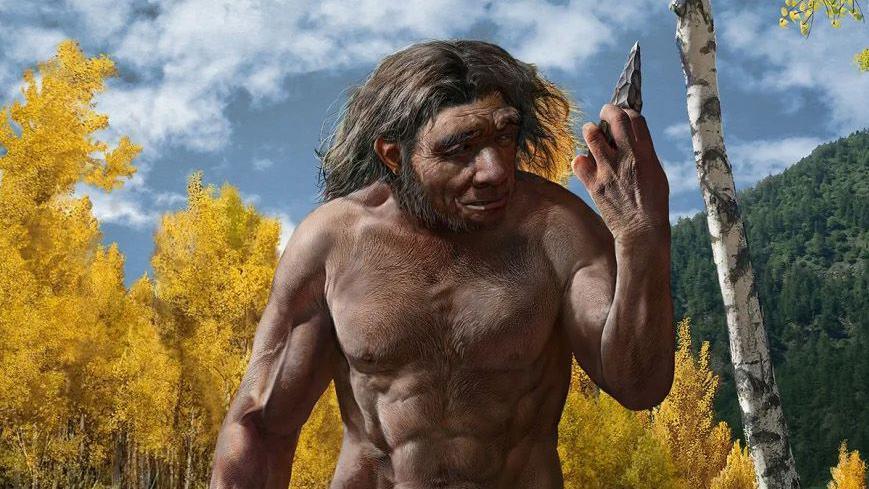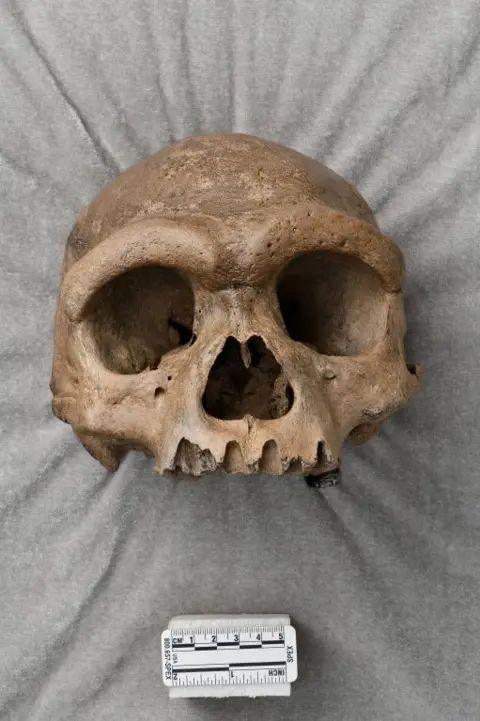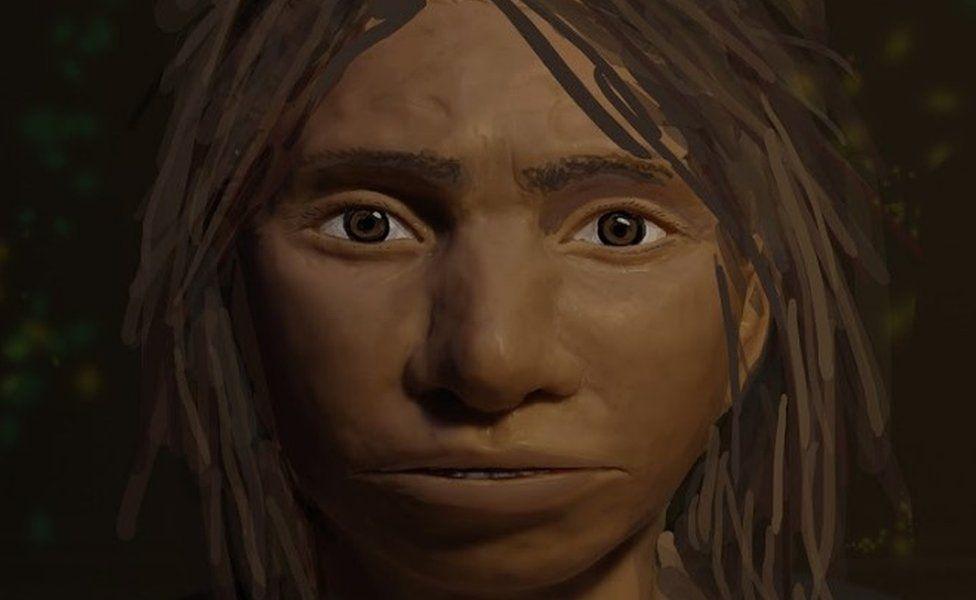Scientists think 'Dragon Man' is an ancient, mysterious type of human

An artist's impression depicts how Dragon Man might have looked.
- Published
Scientists have linked genetic material extracted from an ancient skull found in China in 2018 to a mysterious group of early humans.
The skull, nicknamed 'Dragon Man' had fascinated experts because it didn't seem to match any other prehistoric human.
Now, an expert study says it has linked genetic material from the fossil with previous bones belonging to an group of prehistoric humans called Denisovans.
Read on to find out more about Dragon Man, the Denisovans and how they made the discovery.
More ancient humans
- Published26 June 2021
- Published14 April 2024
- Published8 January 2023
Who is Dragon Man?

The ancient fossil is thought to be more than 146,000 years old
The "Dragon Man" or Homo longi was the name given to the early relative whose fossilised skull was first given to experts in China in 2018, after reportedly being first discovered back in 1933.
The skull is thought to be around 146,000 years old and has been identified as a male of around 50 years old.
The finding was extra interesting to scientists who said they believed the Dragon Man was closer to modern humans than Neanderthals.
Who are the Denisovans?

Expert research suggests Denisovans became extinct tens of thousands of years ago
Meanwhile Denisovans were a species of ancient humans, distinct from Neanderthals, another species of ancient human.
Both are extinct relatives of modern humans who at one point lived alongside homo sapiens (humans like us).
Denisovans are believed to have lived in Asia, 285 thousand to 25 thousand years ago.
They were first identified from DNA taken from finger bone found in Siberia in 2010.
Since then although other Denisovans have been identified, their appearance had remained a mystery.

Scientists took DNA from the hardened plaque or tartar of a tooth
A team from the Institute of Paleontology and Paleoanthropology, part of the Chinese Academy of Sciences in Beijing worked on linking the Dragon Man fossil to the Denisovans.
The team failed to retrieve DNA from the skull's tooth and petrous bone, a section at the bottom of the skull which is usually a rich source of DNA in fossils.
Instead it was the hardened plaque on the teeth known as tartar which gave them results they could use.
Based on this evidence, Denisovans can finally be pictured.
They would have had strong brow ridges, larger teeth than Neanderthals and modern humans, but brains around the same size.
"I really feel that we have cleared up some of the mystery surrounding this population," said Qiaomei Fu, lead author of the new research.
"After 15 years, we know the first Denisovan skull."
It's hoped that this research could help identify Denisovan bones in other museum collections too.
